Smoked Brisket Tips You Need To Know
Dec 13, 2023, Updated Mar 04, 2025
This post may contain affiliate links. Read more at our disclosure policy.
A Smoked Brisket is an art form, requiring patience, practice, and a few key tips. Whether you’re a seasoned pitmaster or just starting out, these top smoked brisket tips will help you achieve juicy, flavorful brisket that will have your guests begging for more.
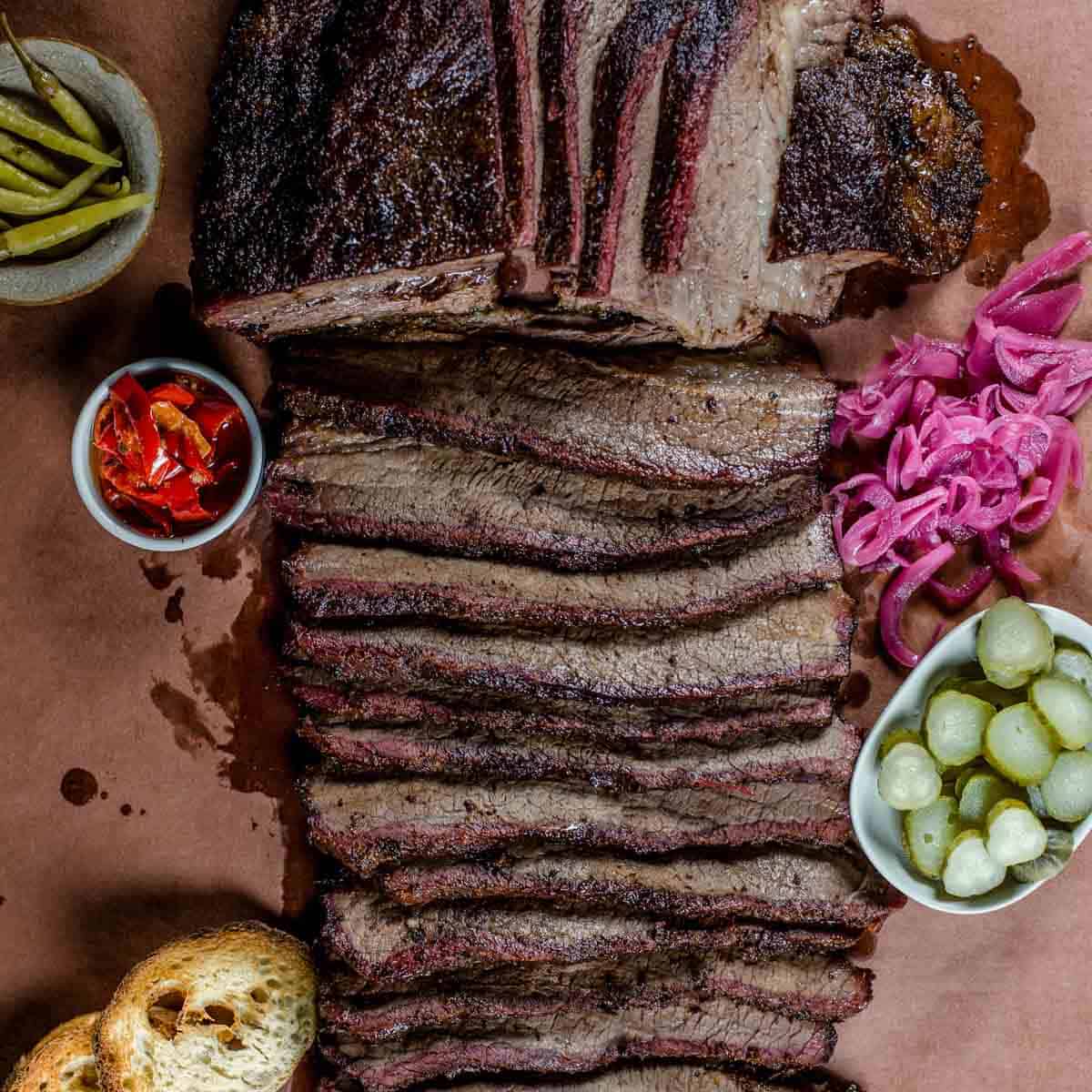
We have catered and cooked hundreds of briskets over 10 years. We’ve hosted events and been guest chefs fielding questions about brisket all the time. We’ve put together a list of the most common brisket tips we are asked.
Table of Contents
- 1. Choose the Right Cut of Meat
- 2. Make Sure Brisket Bends
- 3. Marbling Matters: Buy The Best Quality Meat You Can Afford
- 4. Trim (But Not Too Much!)
- 5. Season Generously
- 6. Use A Binder and Season Overnight
- 7. Don’t Bother Letting It Come To Room Temperature Before Smoking
- 8. Maintain a Consistent Cooking Temperature
- 9. Put the Thermometer Probe in The Flat
- 10. The Stall is Real: Don’t Panic!
- 11. Wrapping: Optional, But Effective
- 12. Resting is Key
- Done Early?
- 13. Slice Against the Grain
- 14. Spritzing
- 15. Bonus: Embrace The Leftovers
1. Choose the Right Cut of Meat
Arguably the most important of all brisket tips. Start with a whole packer brisket. Don’t buy a brisket flat if you intend to smoke an entire brisket. Your average grocery store butcher counter like Kroger, or Safeway, likely only carries a Brisket Flat. These typically weigh up to 6 pounds.
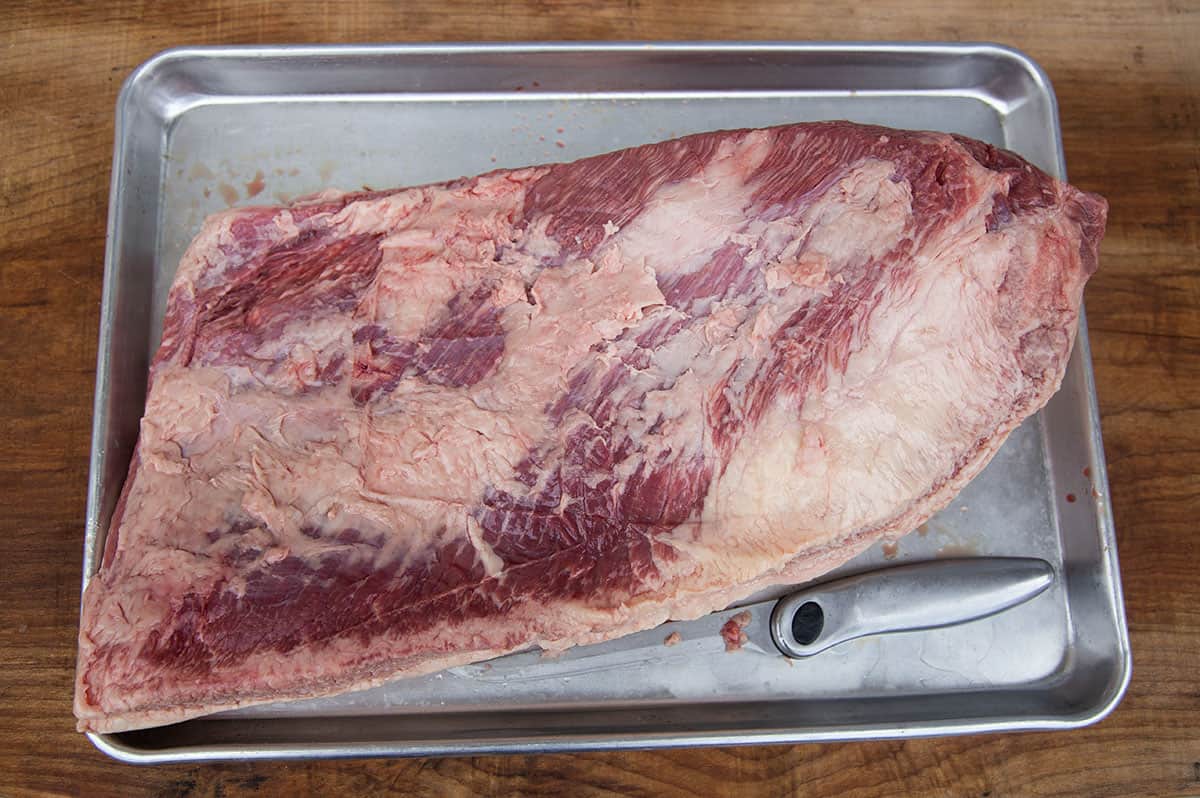
The ideal cut for smoking brisket is using a whole packer brisket, which includes both the flat and the point. The typical weight is 12 – 20 pounds. The flat cut is leaner and cooks faster, while the point is fattier and is typically what is used for Brisket Burnt Ends. Together, they create a perfectly balanced and flavorful brisket.
For a full packer brisket seek out your larger box stores, like Costco or Sam’s Club. You can also buy directly from restaurant supply stores. Or consider sourcing from online brisket retailers and have delivered right to your doorstep. The downside for online purchasing is you can’t physically see the brisket first to inspect it yourself. So read the comments of your suppliers before buying online.
2. Make Sure Brisket Bends
Another of our brisket tips is to pick up the whole brisket and make sure it bends. A thawed brisket shouldn’t be stiff as a board. So pick up the brisket and bend it. It should bend easily and while you won’t bend it in half, you should be able to move the brisket around.
This is a sign of good marbling and avoids tougher cuts of meat. Too stiff? Pick another brisket or retailer.
3. Marbling Matters: Buy The Best Quality Meat You Can Afford
The marbling of the brisket is important. The white striations visible in the brisket flat and point are what breaks down over the cooking process. That fat helps to keep the brisket moist and flavorful over the many hours of smoking.
If you can afford USDA graded Choice, Prime, or even American Wagyu, those specific beef grades have the most marbling.
Avoid a brisket that is tough, indicated in the pliability test. Or one that shows no visible marbling in the packaging. If you can only find a Select graded brisket consider injecting it with a good beef brisket injection of beef broth. This will help offset the lack of intramuscular connective tissue.
Grass Fed: Don’t assume grass fed only beef won’t be good to smoke. Check the marbling factor because certain breeds of beef that are only grass fed will sometimes be lovely to smoke as well. But not all, hence you need to look for that marbling!
4. Trim (But Not Too Much!)
While some fat is essential for flavor and moisture, too much can result in a greasy brisket with chewy fat pieces. No matter what you hear, the fat DOES NOT RENDER OUT completely.
Remove the thick layer of fat on the top of the point of the brisket, leaving a thin layer, around 1/4-inch, for protection. Trim around the edges of the brisket and remove any silver skin from the flat, which can be tough and chewy.
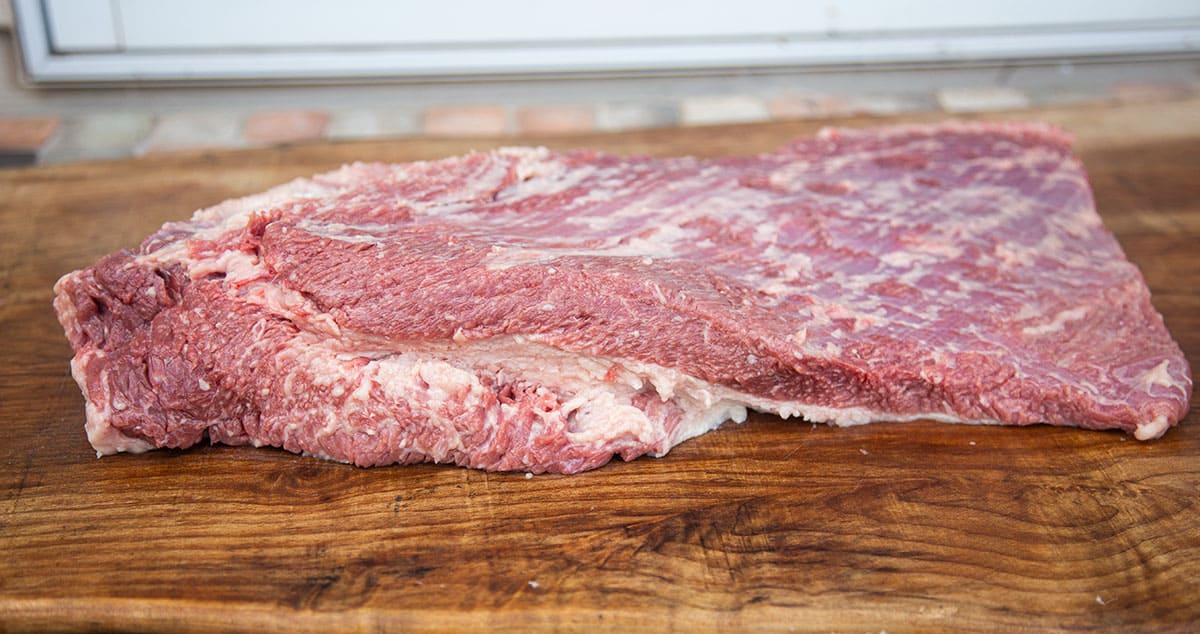
It’s not uncommon to remove 2 – 3 pounds of fat while trimming. No matter what other brisket tips you read, you need to trim brisket properly.
Save those trimmings and use them to make beef tallow. Check out our article on the must-have brisket tools for more details.
5. Season Generously
A good brisket rub recipe is essential for a flavorful brisket. Use a generous amount of your favorite rub, covering all sides of the meat. Popular spices include SPG seasoning (kosher salt, coarse black pepper, and granulated garlic), paprika, cumin, chili powder, and onion powder. You can also experiment with different herbs and spices to create your own unique rub.
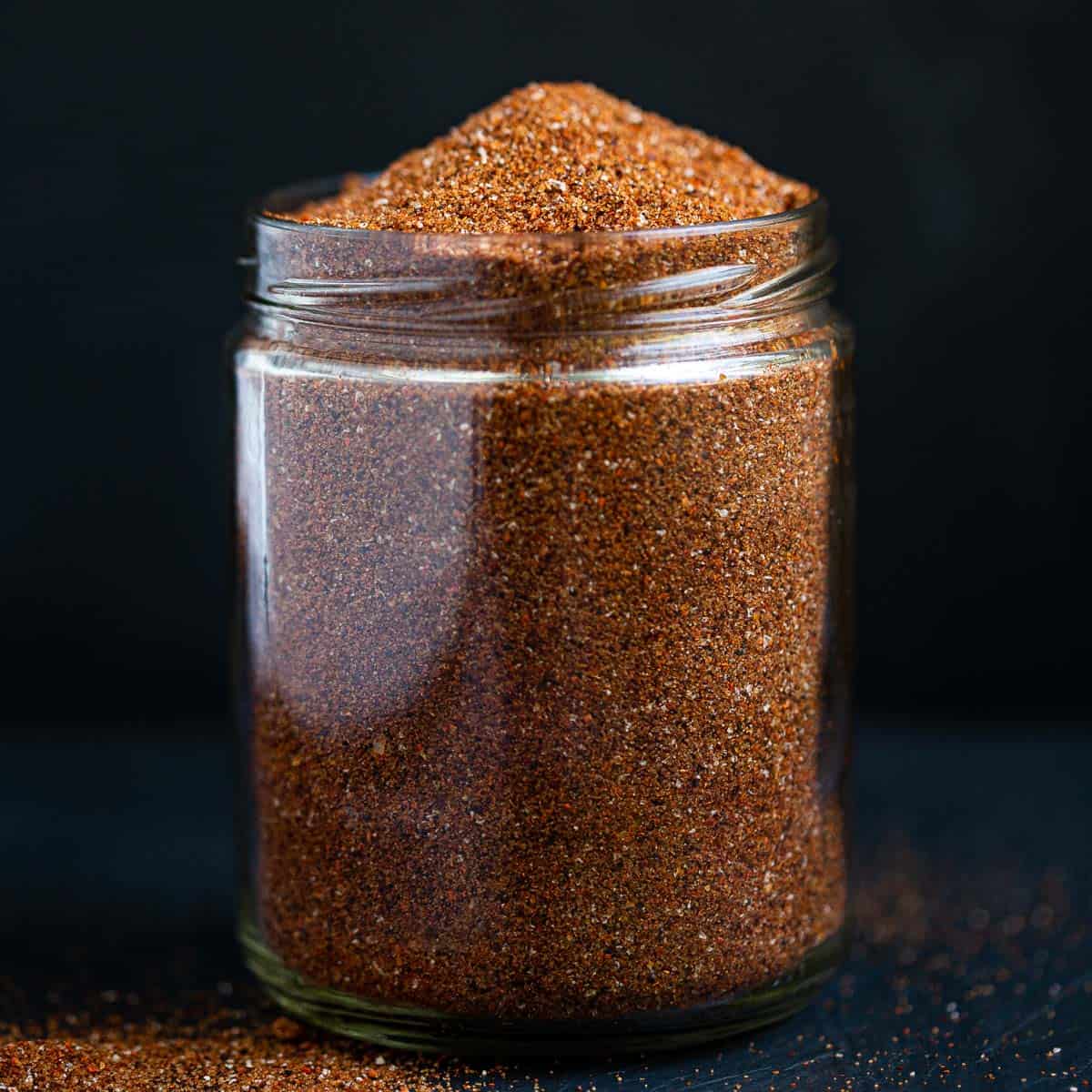
We do not recommend a brisket seasoning with any sugar or sugar listed as the first two ingredients. The beef flavor will shine on its own and we don’t like sweet flavors with brisket.
6. Use A Binder and Season Overnight
The day before smoking brisket, apply your seasoning liberally to allow it to dry brine for the best flavor.
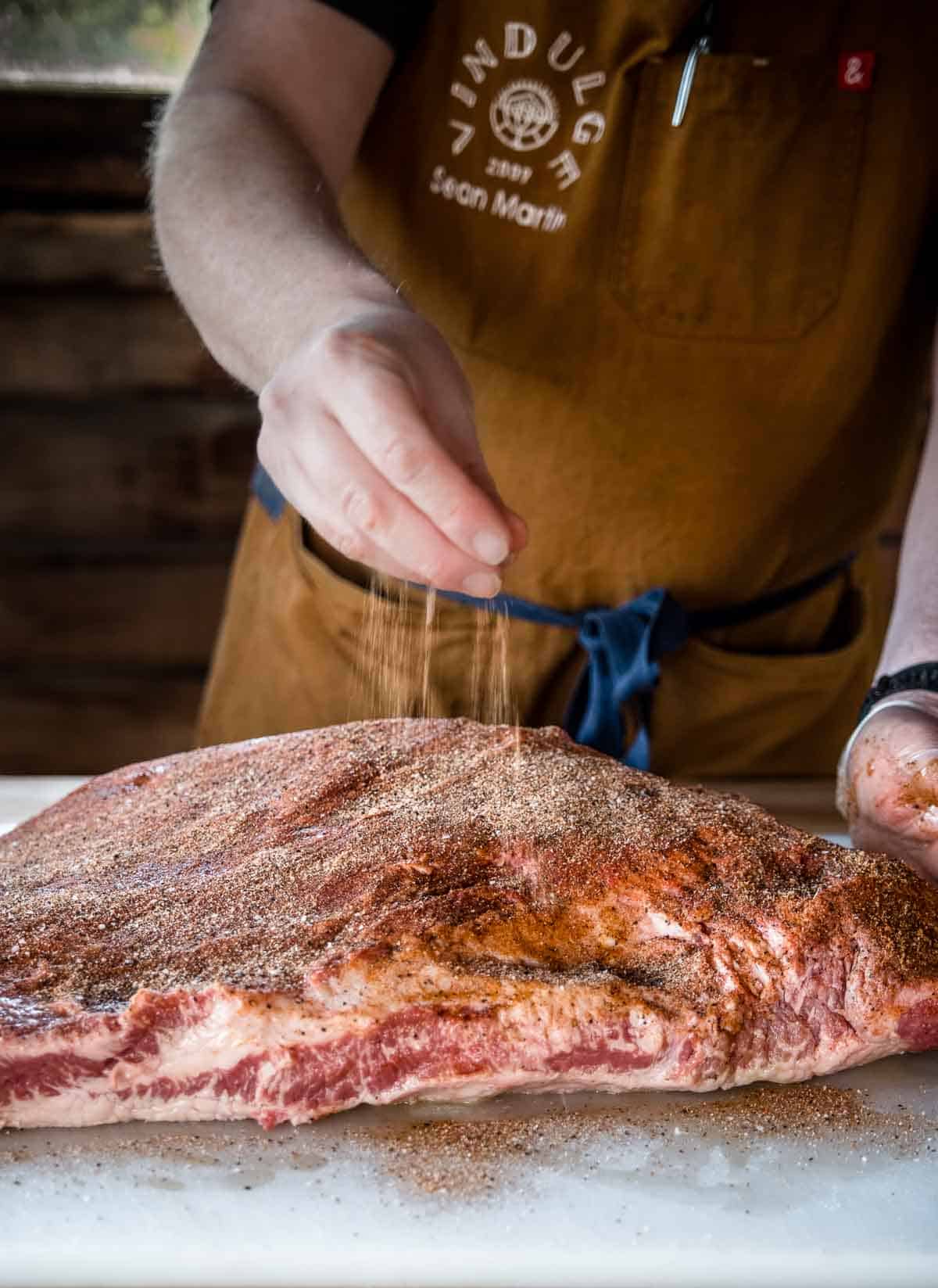
Alternatively, if you don’t have time to season overnight, apply a binder like mustard, beef stock, or olive oil. Then apply the seasoning which will stick to the binder while it cooks.
7. Don’t Bother Letting It Come To Room Temperature Before Smoking
It’s a myth that you should allow the brisket to come to room temperature prior to smoking. In one hour’s time, the brisket interior temp will still be at refrigerator temperature. You can learn more in our article dispelling the myth of letting meat come to room temperature.
The more important of our brisket tips is to make sure you allow it to season overnight and the smoker is ready at the correct temperature before putting the brisket on.
8. Maintain a Consistent Cooking Temperature
Aim for a consistent cooking temperature between 225°F and 275°F. We prefer 275 because we don’t want to sit around a smoker all night. This low and slow cooking process allows the collagen in the meat to break down, resulting in a tender and juicy brisket.
To monitor the temperature invest in a good leave-in Bluetooth thermometer, like the Thermoworks Smoke X unit. It has up to 4 probes and you can monitor the temperature of the brisket in multiple places. Or you can use a wireless setup like the Thermoworks RFX system which can also handle multiple probes.
For checking temperature toward the end of the cook we recommend a good instant-read meat thermometer, like the Thermoworks Thermapen One. Being able to probe in multiple locations of the brisket assures it’s done all over and not just one spot.
9. Put the Thermometer Probe in The Flat
Let’s end the debate once and for all. If you want to know where to insert that probe to monitor the temperature, place it in the flat. Better yet have two – one in the flat and one in the point.
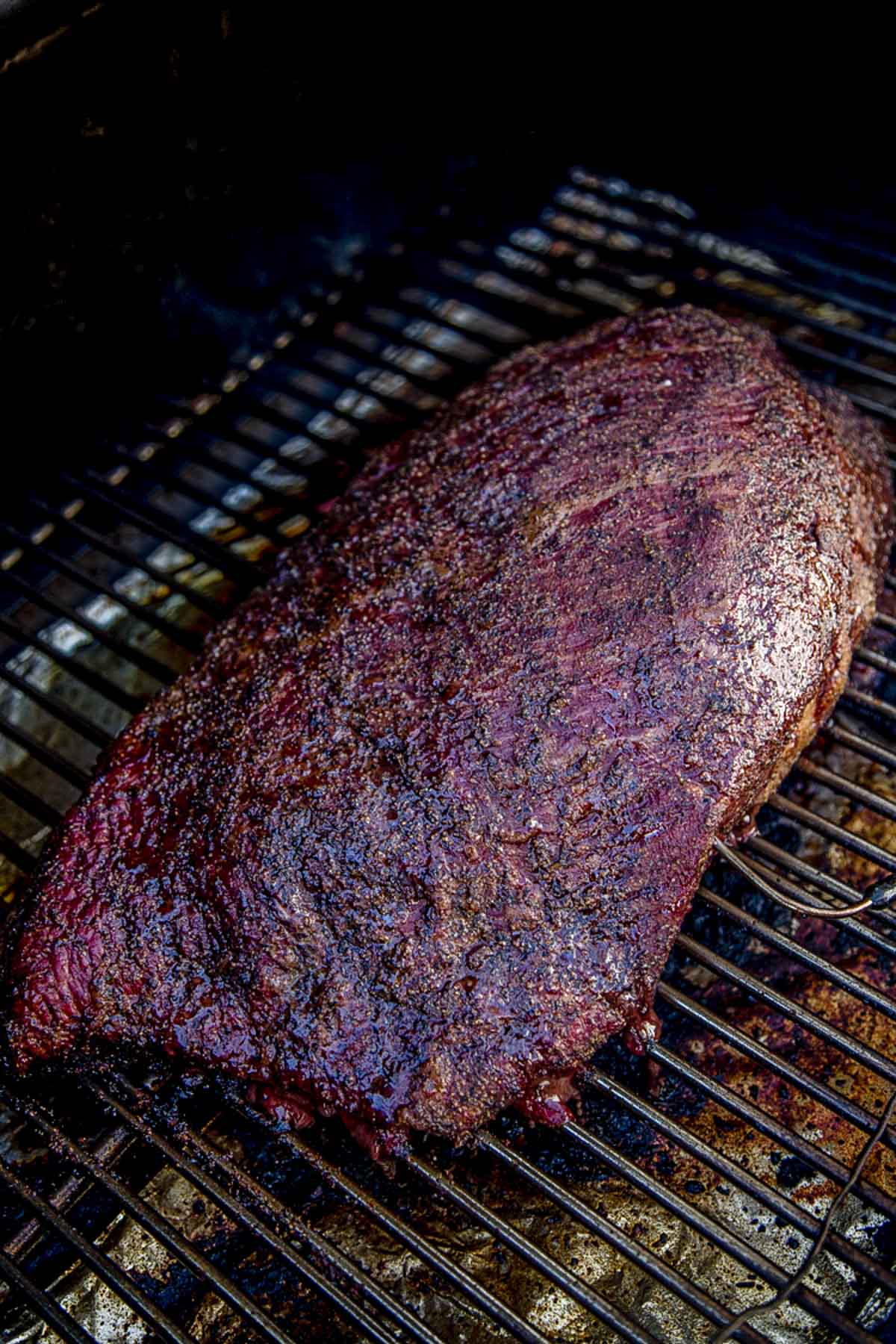
The point meat will cook fast and is much more forgiving than the flat.
10. The Stall is Real: Don’t Panic!
Around the 165°F mark, the brisket may stall, meaning the temperature will plateau or even drop slightly. This is normal and doesn’t mean you’ve done anything wrong. Simply keep the smoker at the desired temperature and let the brisket continue cooking until it reaches an internal temperature of 203°F-205°F for tender and juicy meat.
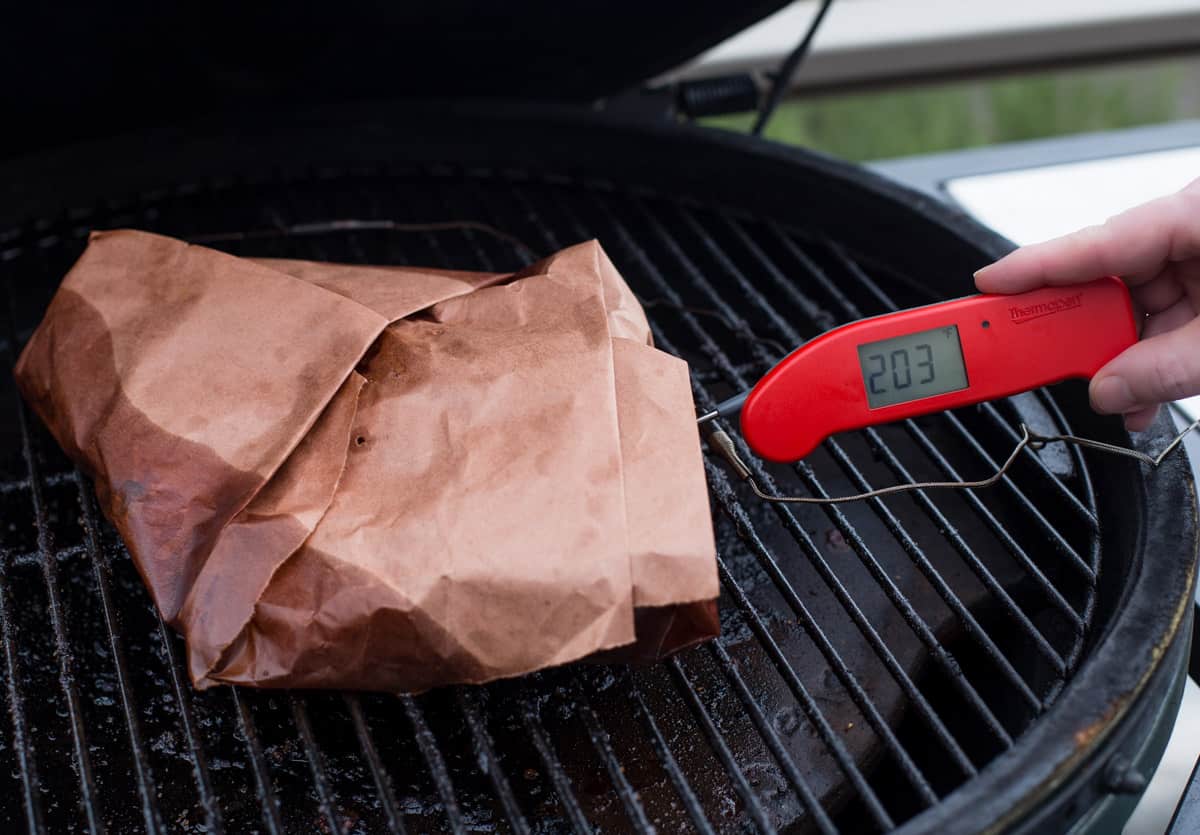
Or consider speeding things along with wrapping your brisket.
11. Wrapping: Optional, But Effective
Many pitmasters choose to wrap their brisket in butcher paper or aluminum foil during the stall, otherwise known as the Texas Crutch. This helps to trap moisture and accelerate the cooking process. However, wrapping can also result in a less “barky” exterior. Experiment with both methods to see what you prefer, because at the end of the day it comes down to your personal preference. Both methods work.
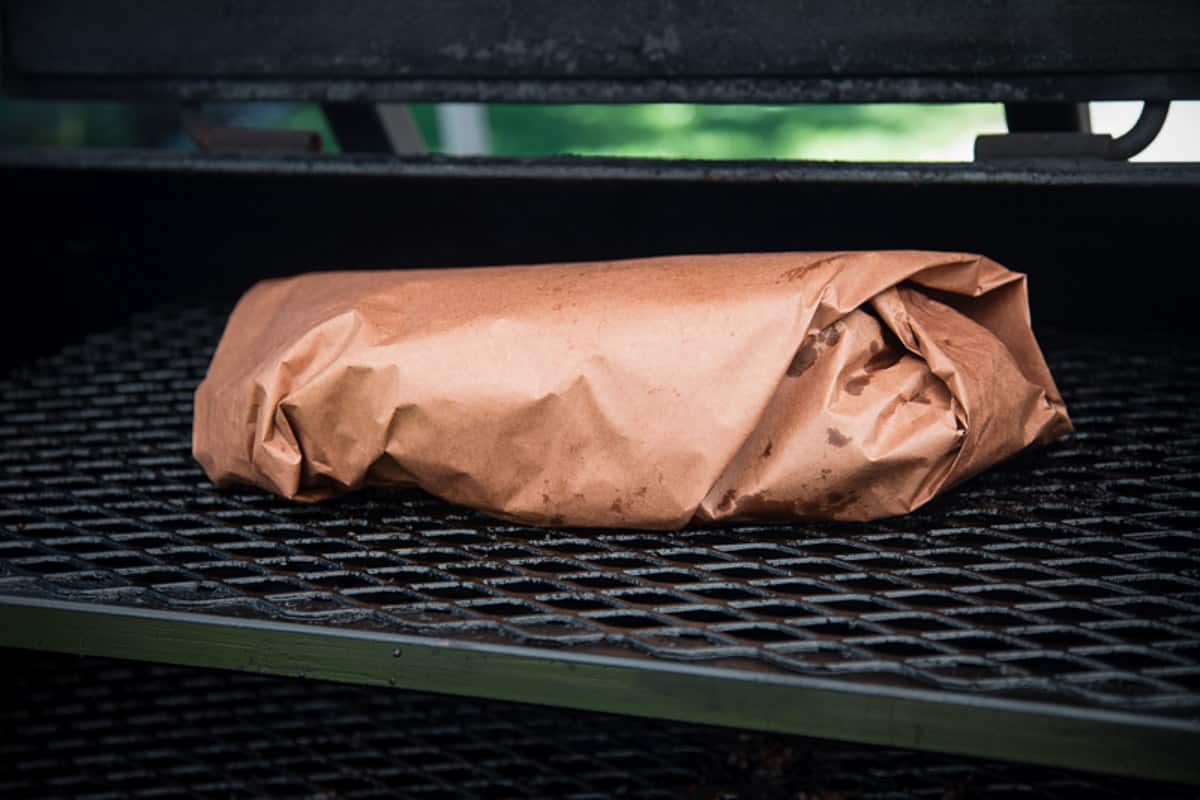
If deciding to wrap we recommend using butcher paper versus aluminum foil. It allows some breathing and avoids steaming the meat as much as foil can.
12. Resting is Key
The number one observation and the most important of our brisket tips after selecting the right one is the lack of resting. People don’t let the brisket rest long enough. Resting is absolutely a key part to the melt in your mouth tenderness that makes brisket so unique.
Once the brisket reaches the desired internal temperature, remove it from the smoker and let it rest for at least one hour. Minimum. This allows the juices to redistribute throughout the meat, resulting in a more flavorful and tender final product.
Done Early?
If your brisket is done early, then you can hold it in a cooler with no ice for up to 4 hours. When brisket is done, remove from smoker and let rest, wrapped for 30 minutes. Then place, wrapped, in the cooler with no ice. It will hold warm for hours. Slice before you eat, not before putting in the cooler.
13. Slice Against the Grain
For the most tender results, slice the brisket against the grain. This means cutting across the muscle fibers, making the meat easier to chew. This is especially important when slicing the brisket flat.
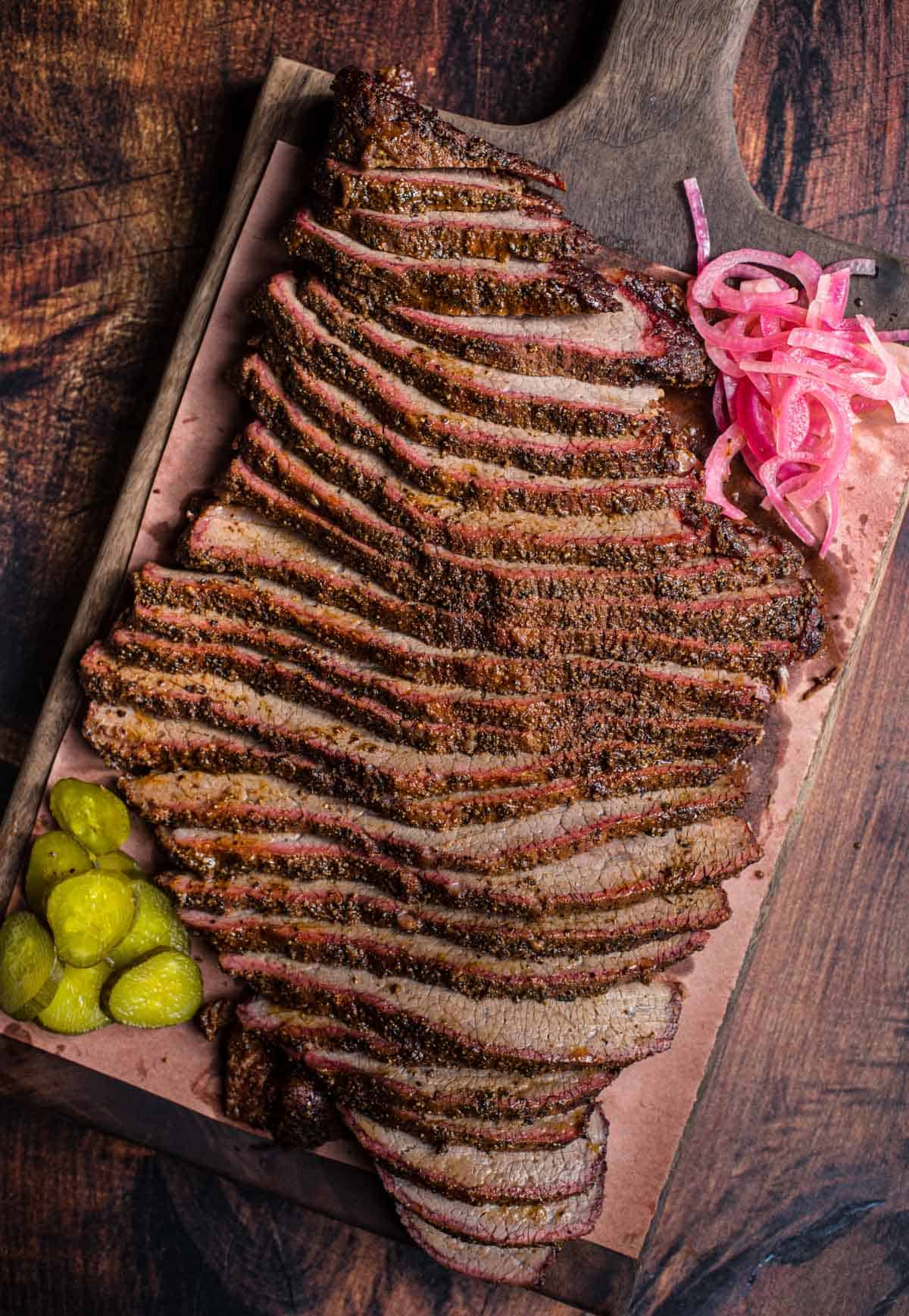
We recommend using at least a 12-inch slicer knife for best results.
Would you like to save this?
14. Spritzing
Some pitmasters like to spritz their brisket using water, apple cider vinegar, or beer mixture throughout the cooking process. This helps to add moisture and prevent the bark from becoming too dry.
In our cookbook Fire + Wine we use equal parts merlot wine and beef broth for a wine based spritz.
15. Bonus: Embrace The Leftovers
The fun part is experimenting as you learn how to master brisket. But inevitably you will have leftovers. You can make some amazing leftover brisket ideas with all the deliciousness you’ve made. We’ve called out a few of our favorites.
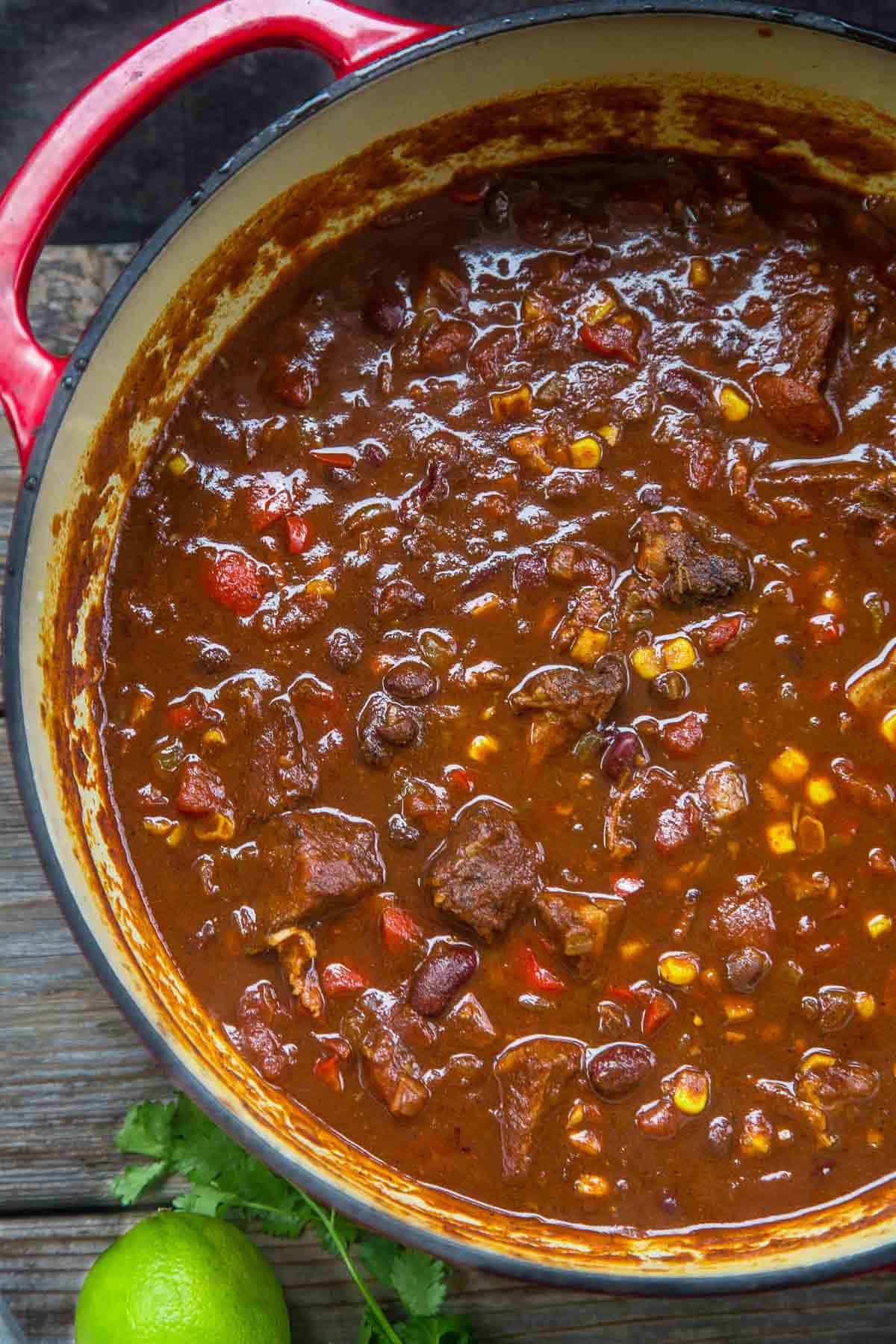
- Brisket Chili – This aware winning chile recipe has beans, but don’t let that fool you. It’s award winning and has generated trophies for dozens of people around the world.
- Brisket Nachos – Whether it’s game day or a lazy day – grab some leftovers and make these baked brisket nachos.
- Brisket Tacos – The ultimate taco Tuesday recipe.
With these tips and a little practice, you’ll be smoking perfect briskets in no time. So fire up your smoker, grab your favorite rub, and get ready to impress your guests with this delicious barbecue masterpiece!

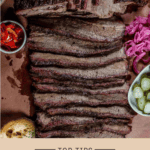
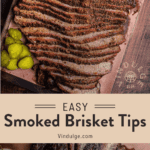
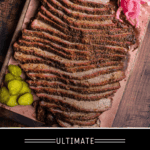


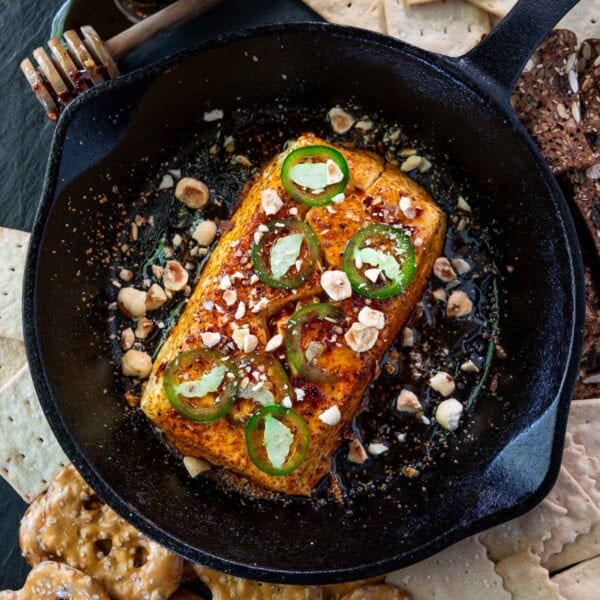
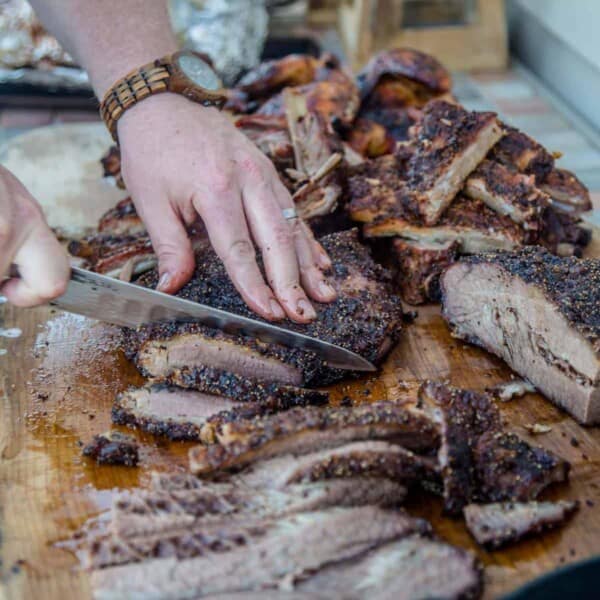

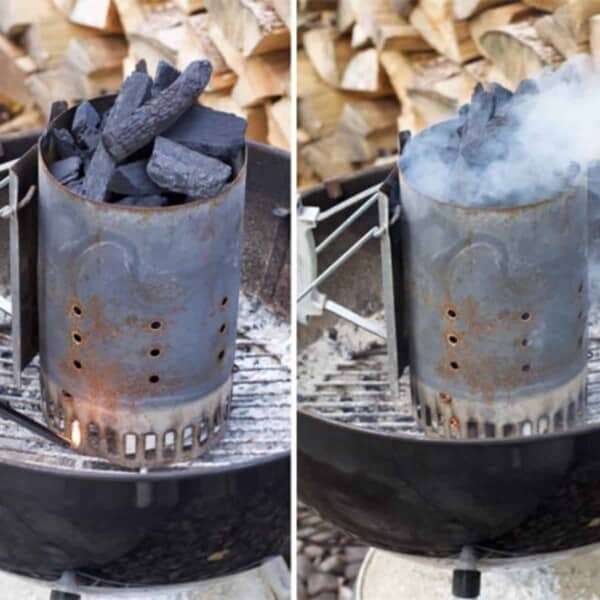
















Use these brisket tips so you can nail smoked brisket perfectly every time.